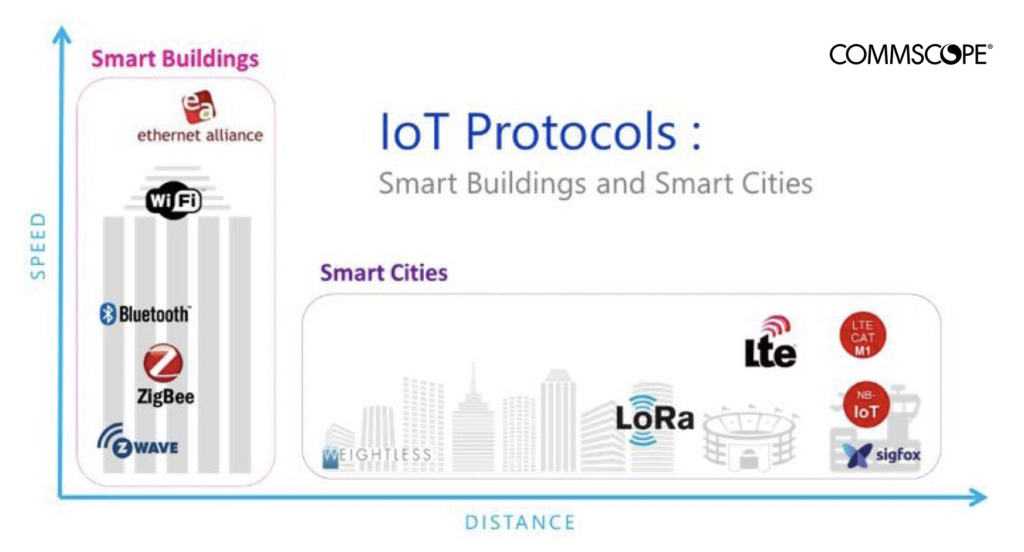
Another post that is not really about PoE, but a reflection on how prompting a conversation about it might have provided a moment of clarity about role I could play having done so.
Back when I was consulting a networking specialist last year, the usual manufacturer suspects for their converged network deployments included Cisco and their sister company Meraki, HP Aruba and Commscope (Ruckus). Feeds and speeds fed into design network decisions, as did ease of on construction site installation and because time is money is factor due to the herding cats-like nature of scheduling ‘IP partners,’ i.e., as part of managing the connecting up of their technologies to the network.
Obviously there are also commercial considerations that influence what gets specified and why, given there can be a 30-40% difference in rate card of comparable products. And despite more affordable options possibly having better WiFi products or at least based on feedback from some of the MEP contractors and Master Systems Integrators (MSI) I have spoken to. Those conversations also often include mention of Alcatel Lucent Enterprise as another option and not least because of similar thoughts albeit more about the cyber security capabilities of their products.
This post is not about those considerations but really another reflection, as well as trying to show that I am not obsessed with any particular networking manufacturer, or OT one or any tech vendor for that matter. In an ideal world, I would meet and speak to all of them to hear what they have to say in person or present at an event, rather than just read the marketing collateral that is publicly available.
But identifying smart building teams at the network manufactorer’s above is easier with some than others given the sizes of their respective teams can range from 1 to many, and I really only see one possibly two of them speaking and exhibiting at the type of events I go to. Their investment in those teams and that profile raising activity being a possible indication of how much opportunity they see in smart buildings space, which reminds of the following quip by Mark Twain:
“When Everybody Is Digging for Gold, It’s Good To Be in the Pick and Shovel Business.”
Whether the picks and shovels in smart enablement is network infrastructure related or not is probably one for a different post. But I mention all this and include the diagram from Commscope above because Cisco are not the only ones to be extolling the virtues of Power Over Ethernet (PoE), having generated some heat but also light by provocatively/polemically questioning the seemingly Mandy Rice-Davies Applies self-serving nature of that over on LinkedIn (see here and here).
As you will see, the view of MEPs and MSIs that offered their feedback in the comments, or directly that I then shared there anonymously, is less evangelical about there being a best or better way. And the consensus seems to be horses for courses along the lines of the reflection from Dave Lister at IAconnects, which included his view that PoE should be part of strategies but not the default (read more here).
That feedback only represents a thin slice but does include those behind top reference sites and with decades of combined experience of being at the sharp end of the convergence of IT, OT and IoT going on in the built environment. What was interesting to me was the calling into question of the sustainability claims made about PoE and how calculating any environmental impact need to be considered in the round:
Add the carbon emissions associated with that power requirement and the embodied carbon associated with the additional equipment, and there’s a complex issue that needs to be understood in much greater detail.
As for PoE representing the future or being a means of future proofing investment, this was also questioned as follows:
I’ve worked on solutions in the past where PoE+ was incorporated to make the building’s network “future proof”. PoE was made available on every port, whether it was required or not. Max power demand and the potential heat-load therefore had to be considered in each of the comms rooms, again, whether the capacity was to be used or not.
How can “future-proofing” by assuming that all devices will one day operate using PoE be considered a good sustainable procurement decision?
Network architecture needs to consider the devices that are to be plugged into it today, but flexible enough to be adapted for future technology deployments. Smart devices, building technology and ICT equipment is generally reducing in power requirements and PoE demand reduces as a result, lets stop over specifying. Collaboration and early engagement are key.
This and other feedback is from those way more qualified than me to comment on all this, but again this post is not really about PoE but what prompting a conversation about it has helped me understand about a possible role I could play in all this. That said this post was prompted by seeing the diagram above from Commscope that features Zigbee and LoRa hence the title of this post, as both came up in the conversations I have linked to above that my polemical post helped kick start (see diagram explanation in Commscope’s Smart Building Connectivity ebook).
That possible role being linked to some common themes emerging from the prompting of these conversations, and that’s how they often loop back to 3 key crossing ones, i.e. early engagement, collaboration and coordination. Design specification could be another, particularly around the capabilities of what’s required and why by landlords/operators rather than the tech itself. It’s just that I don’t see the big IT players facilitating discussion around those themes as part of their engagement of those at the sharp end i.e., to better understand their pains, gains and jobs-to-be-done, so they can show how they can help them with that with their offerings or at least feed all that back to new product development teams. Without wishing to be create yet more heat, perhaps there’s a need for a more two way conversation in smart building domain where the only real consensus I have heard from all my outreach is “no one person has all the answers.”
At the same time, I have also observed that those MEPs and MSIs I speak to don’t all fit neatly into the auspices of the more traditional trade bodies I have come across, many of them who seem to be have been slow off the block when it comes to smart building space and possibly a barrier to its adoption in some cases because of who they represent is not broad enough for them to keep on top of latest thinking and best practice.
There are newer more agile trade bodies and rating bodies, but it’s not clear how they help amplify the voices of those at the deployment sharp end. They seem more focused on those on either side of them i.e., those who design/specify and those with tech that get specified. That’s probably because they are two of customer segments of at least the rating bodies i.e., those on the design side who help get the ratings in the room as that can help validate specifications (by showing what they are for and why), and those with technologies that they can accredit/certify/validate. There’s probably another post about how the lines between some of those stakeholders are becoming blurred. But real point of this one is to highlight that those in deployment middle seem under represented, hence I am guessing why so many seem keen to share their war stories. Anyway, food for thought and, who knows, maybe even a germ of possible collaboration idea.



